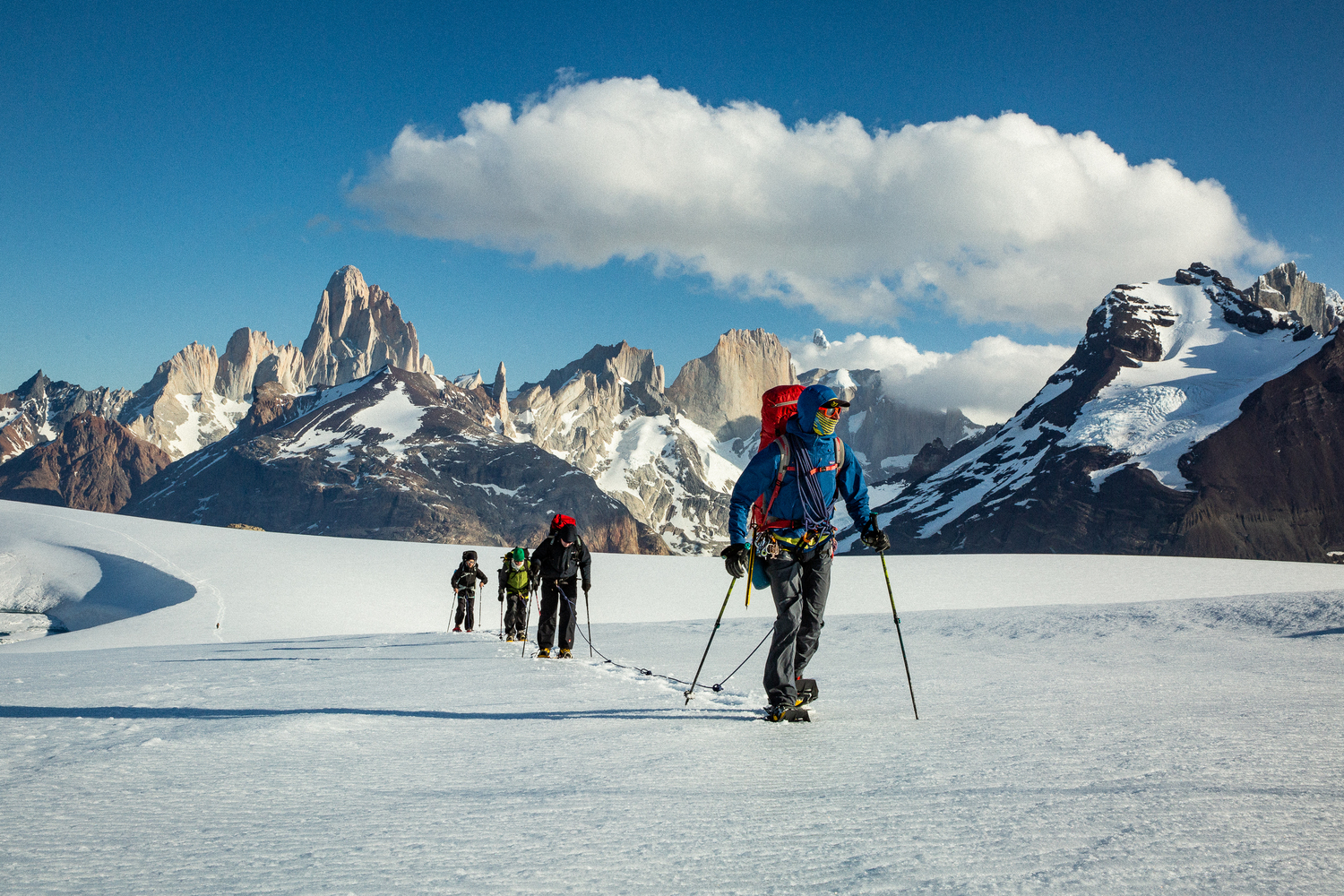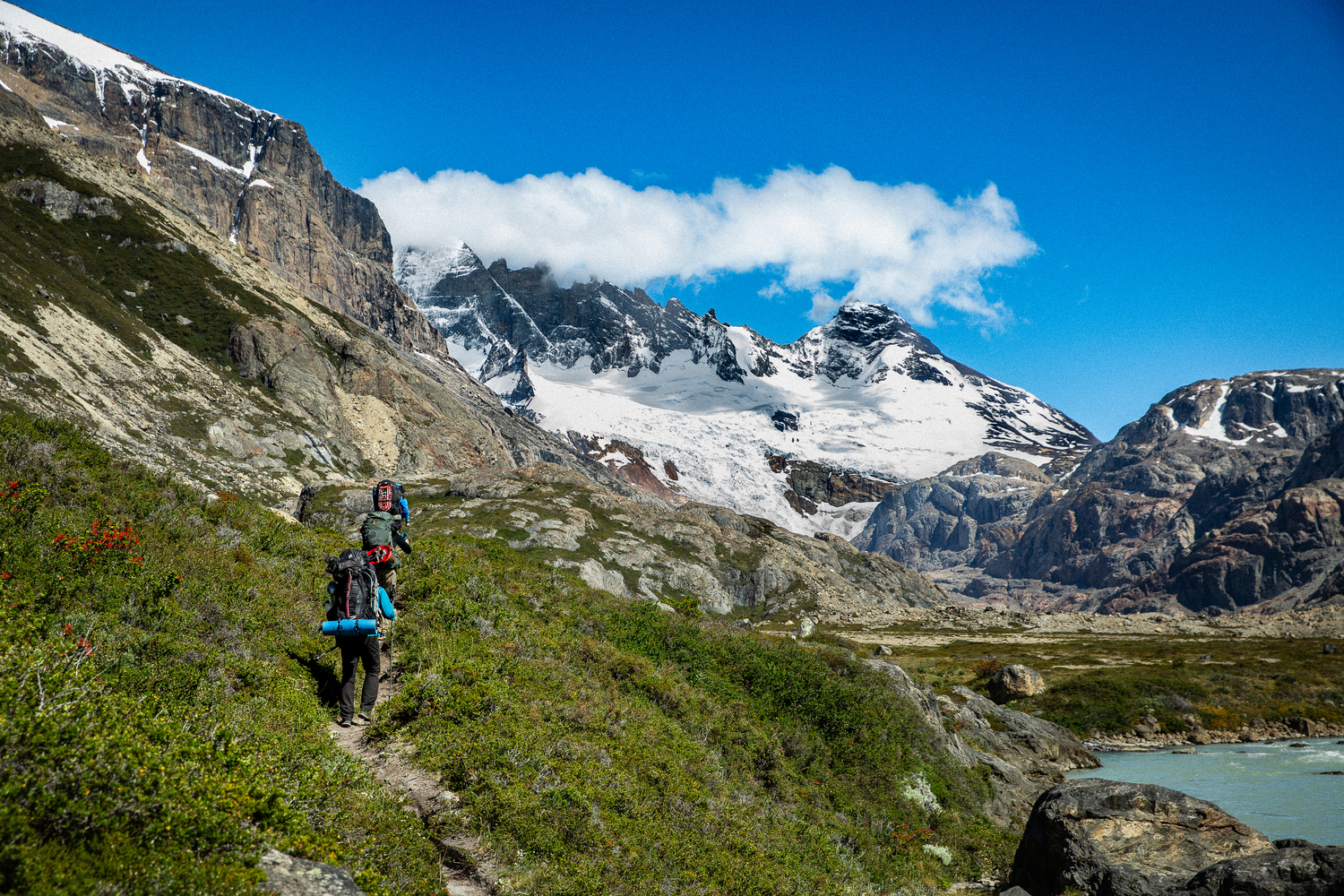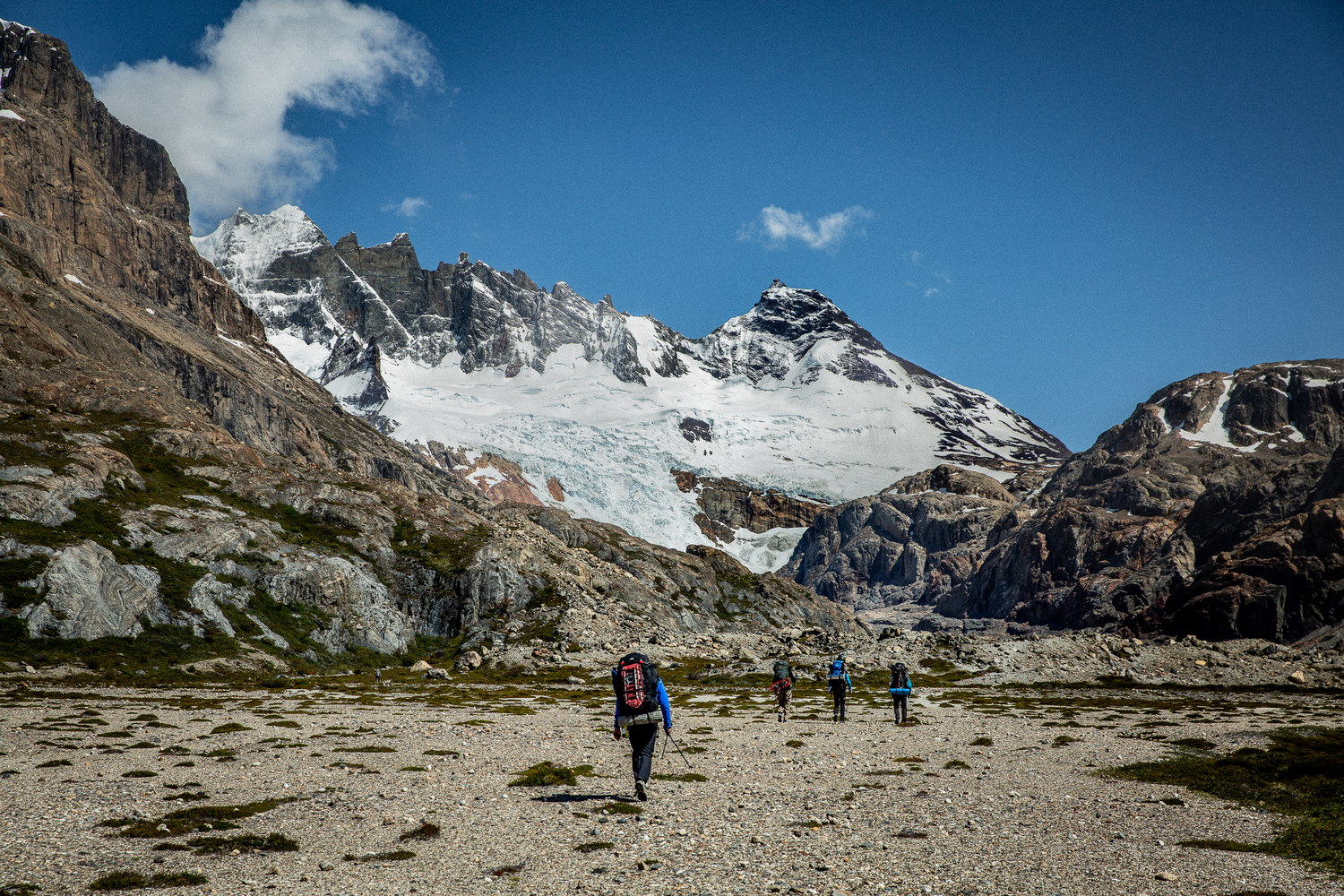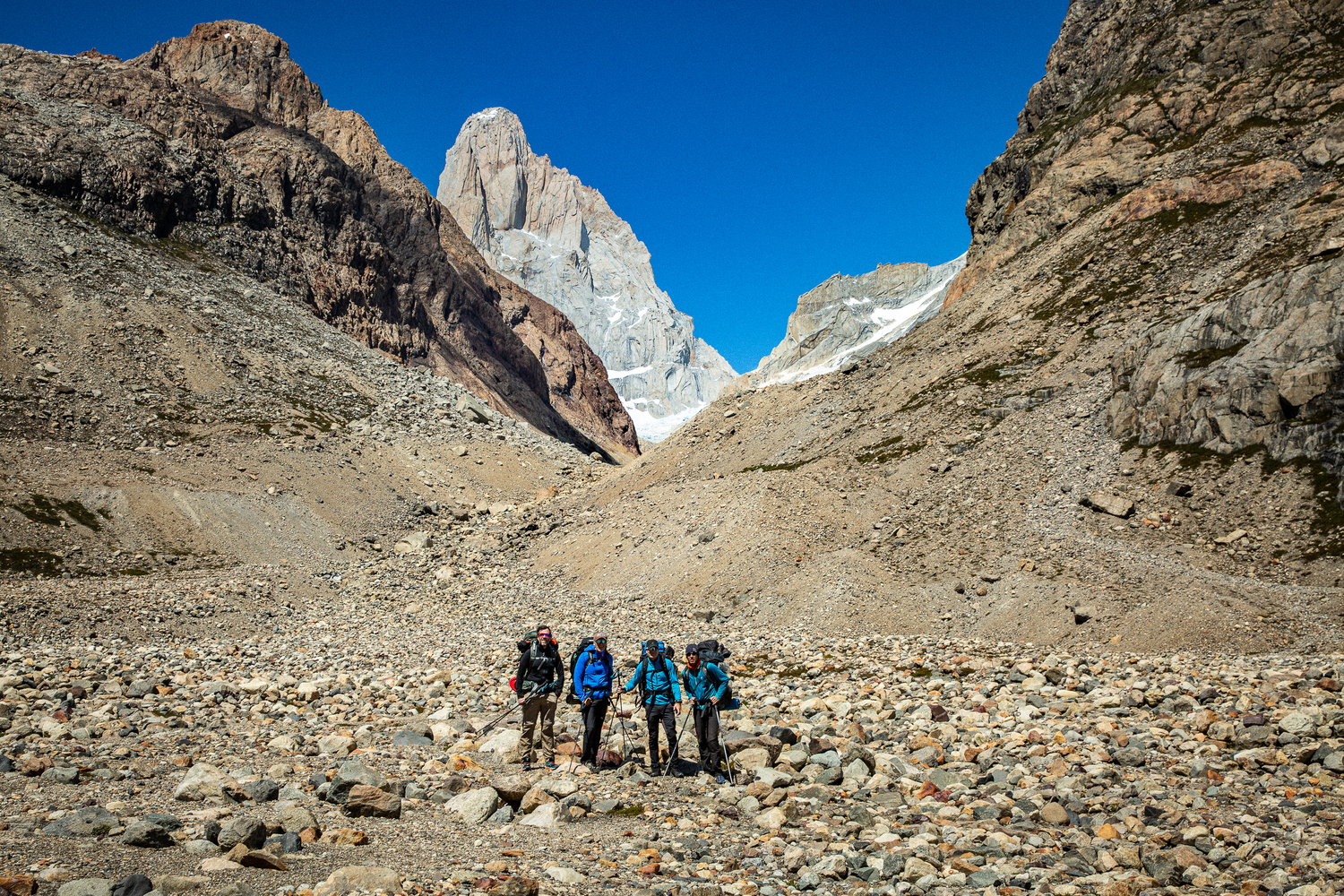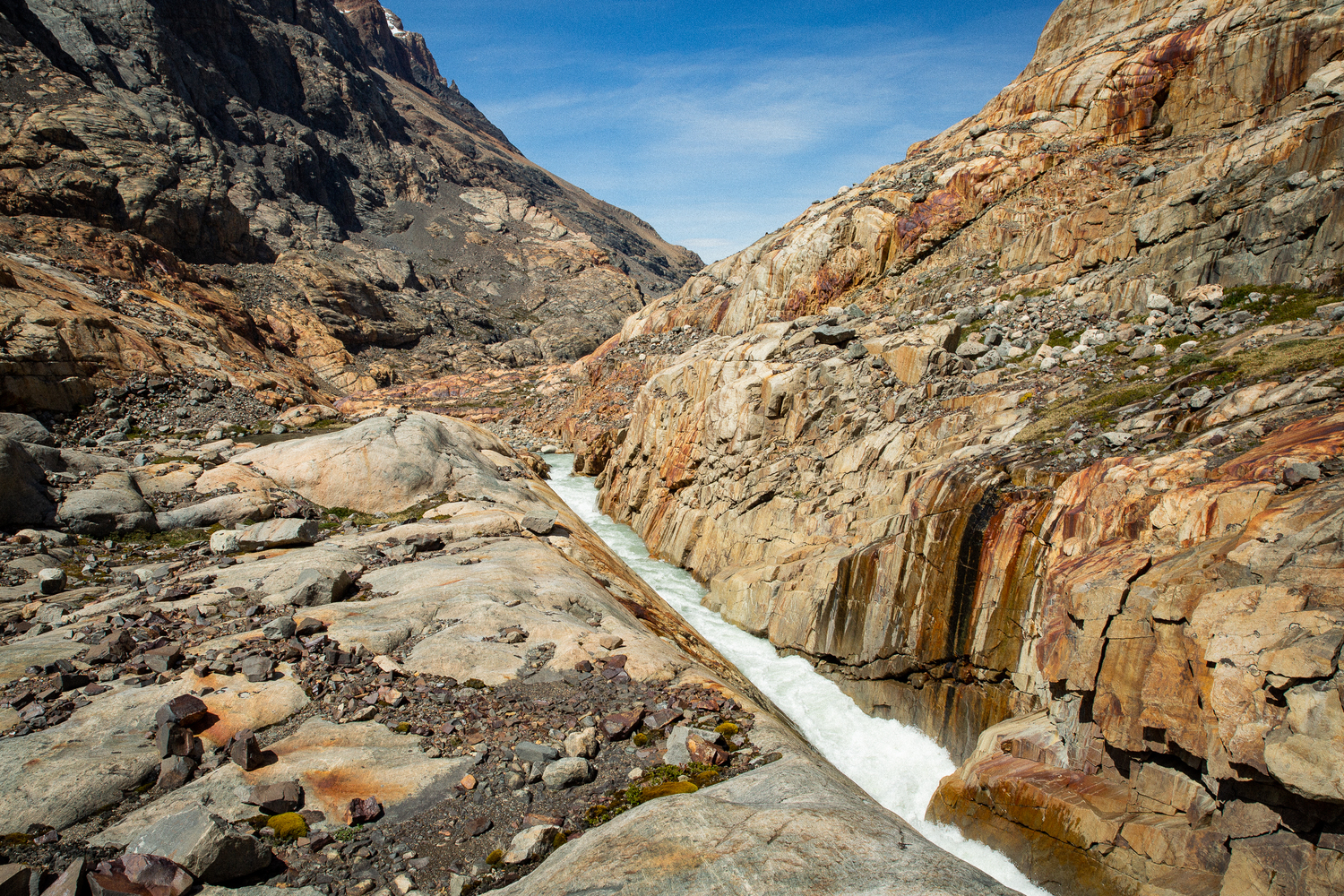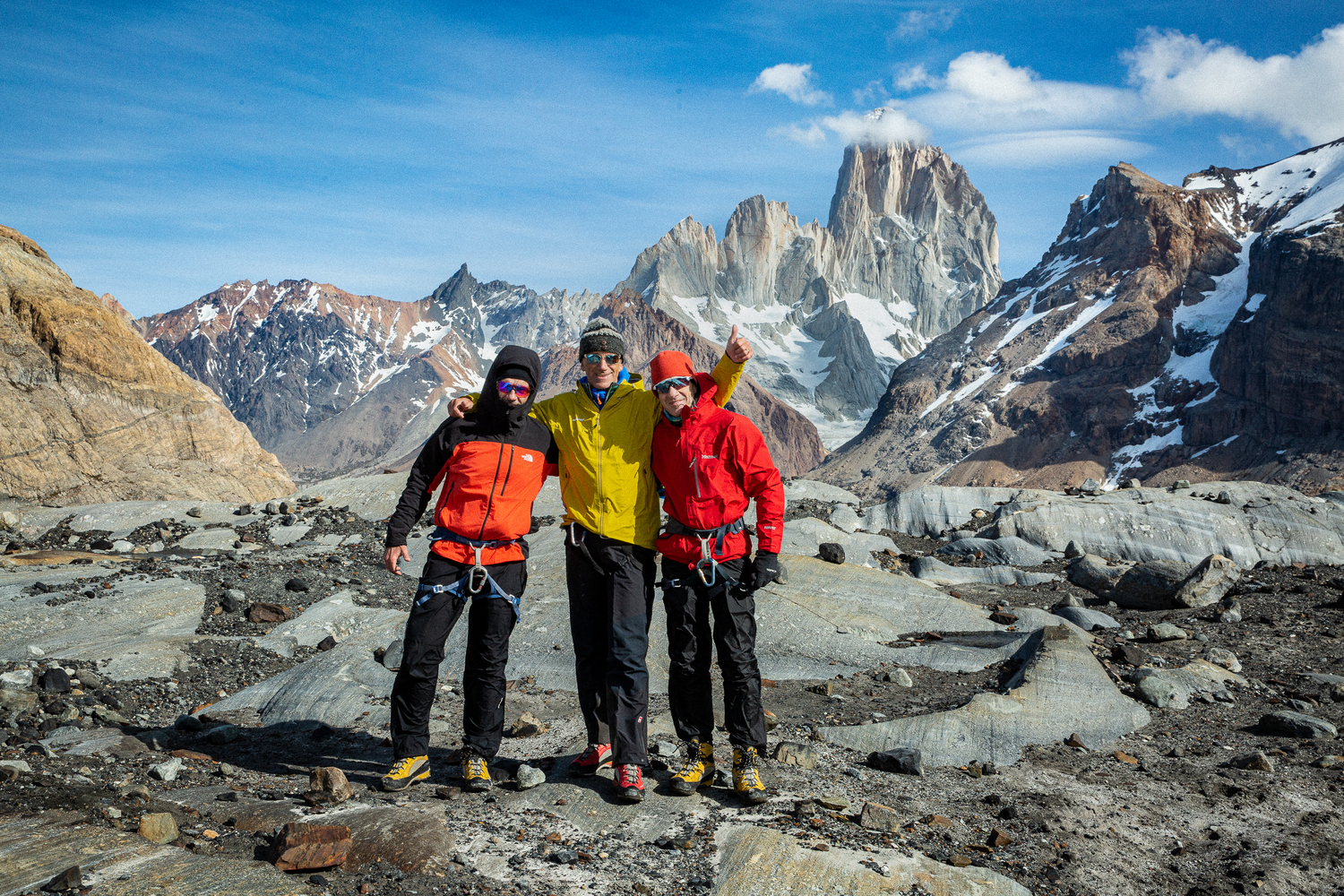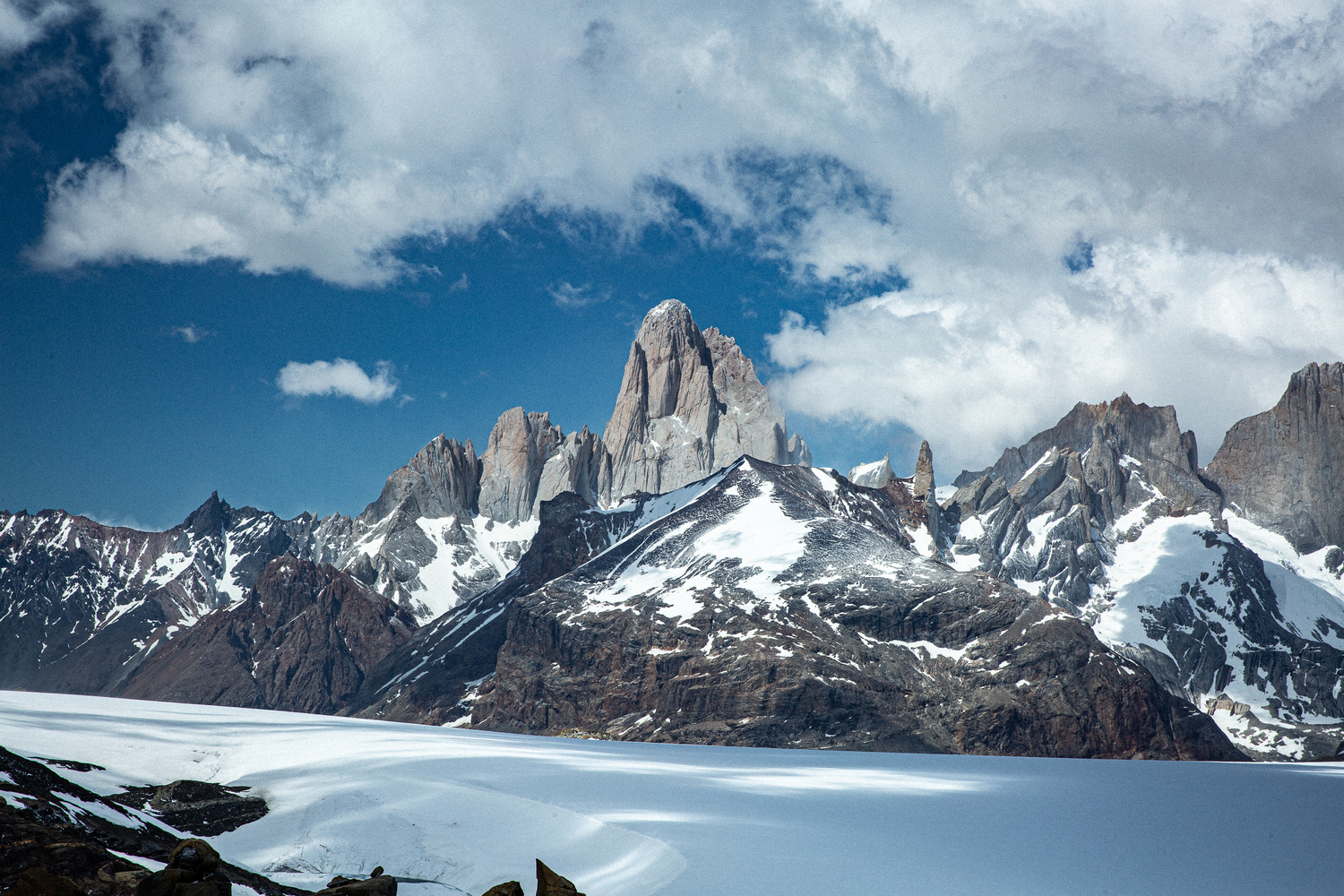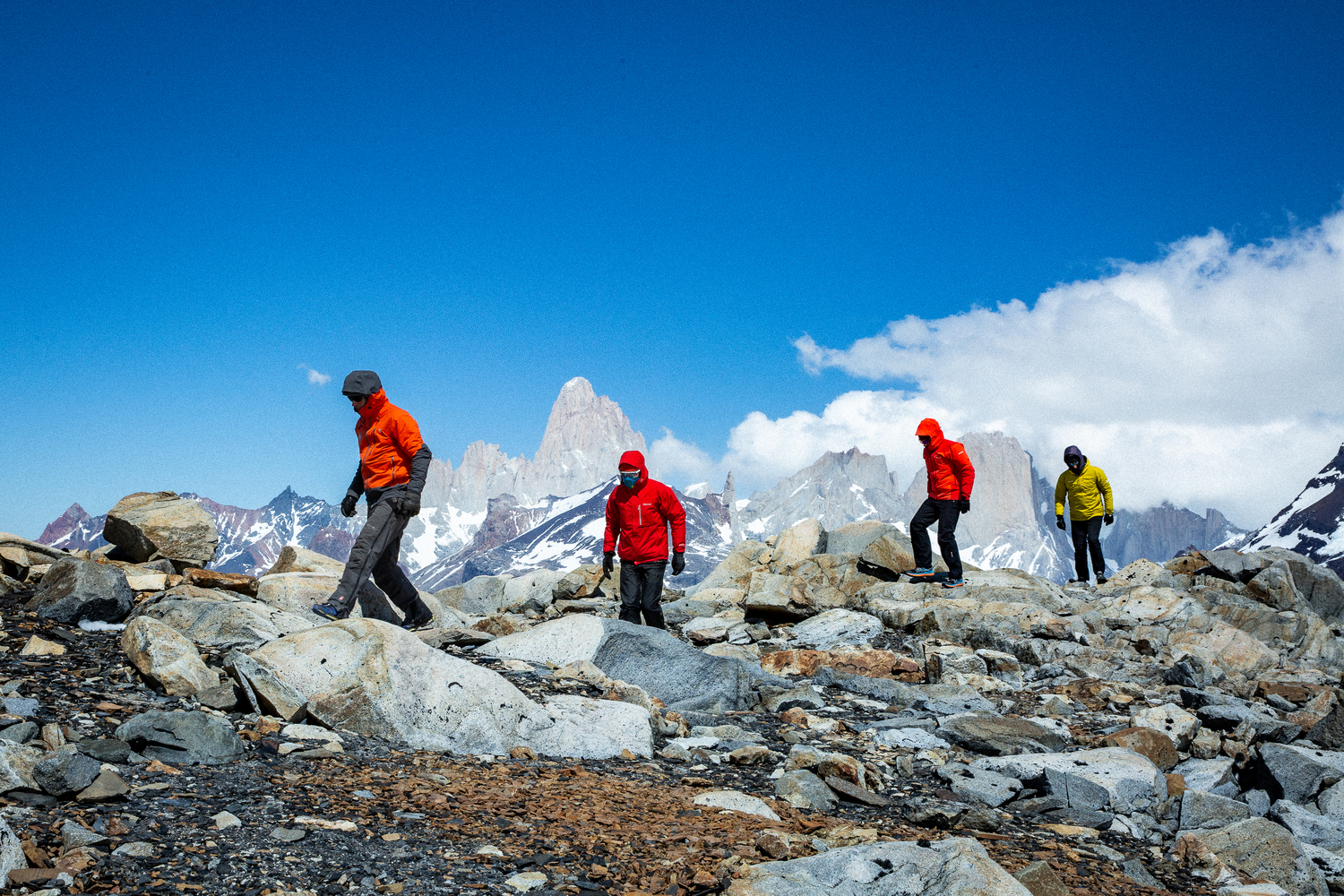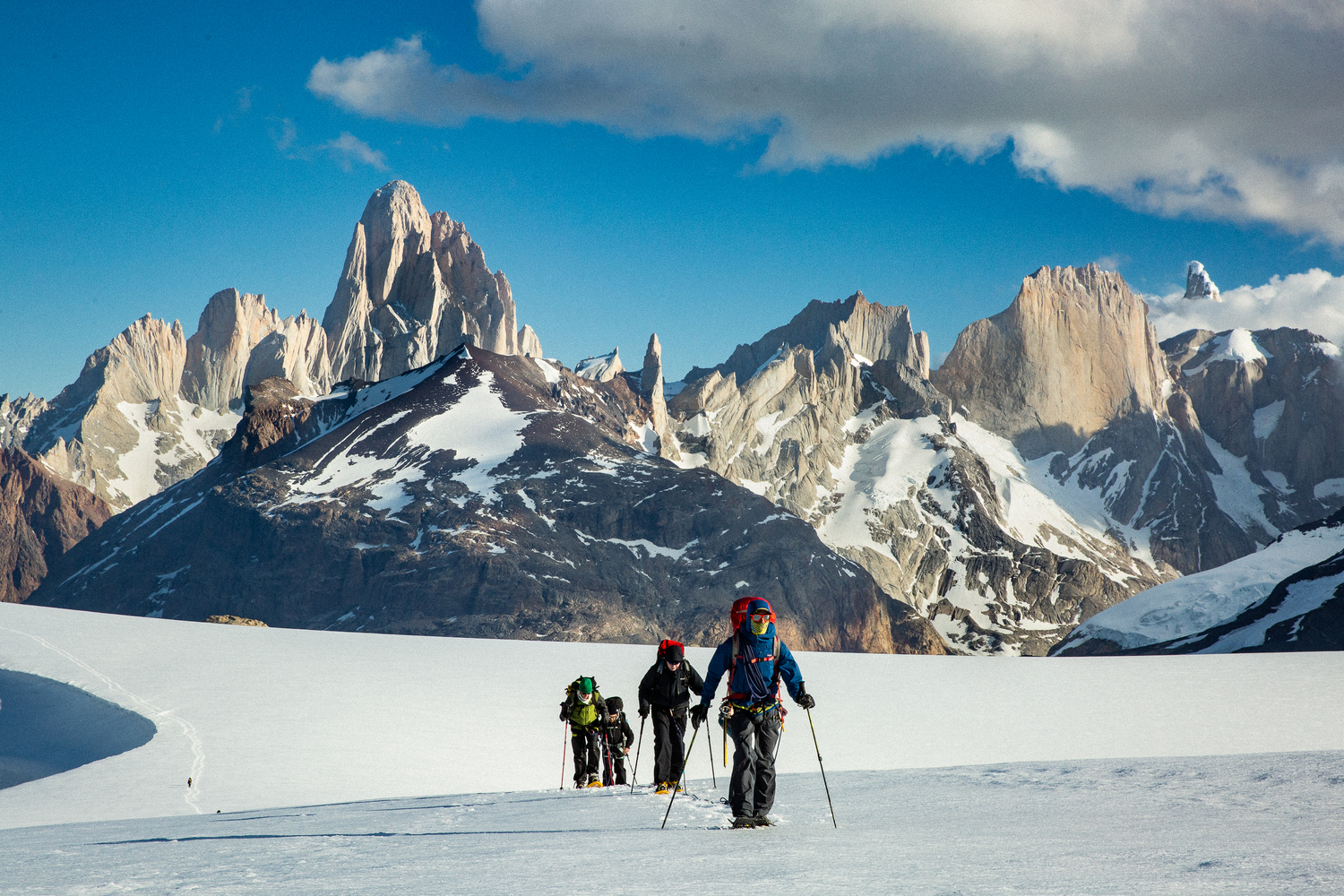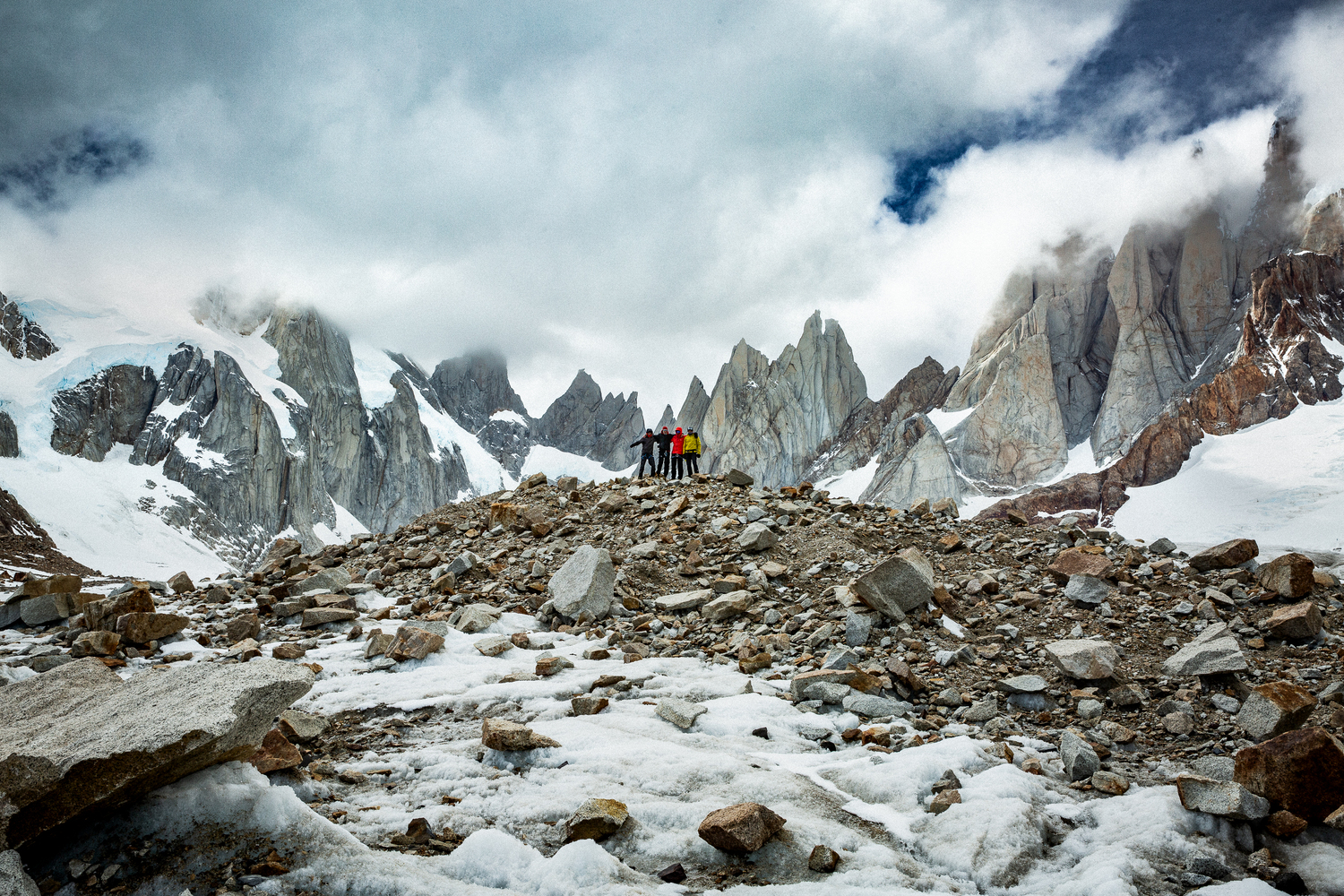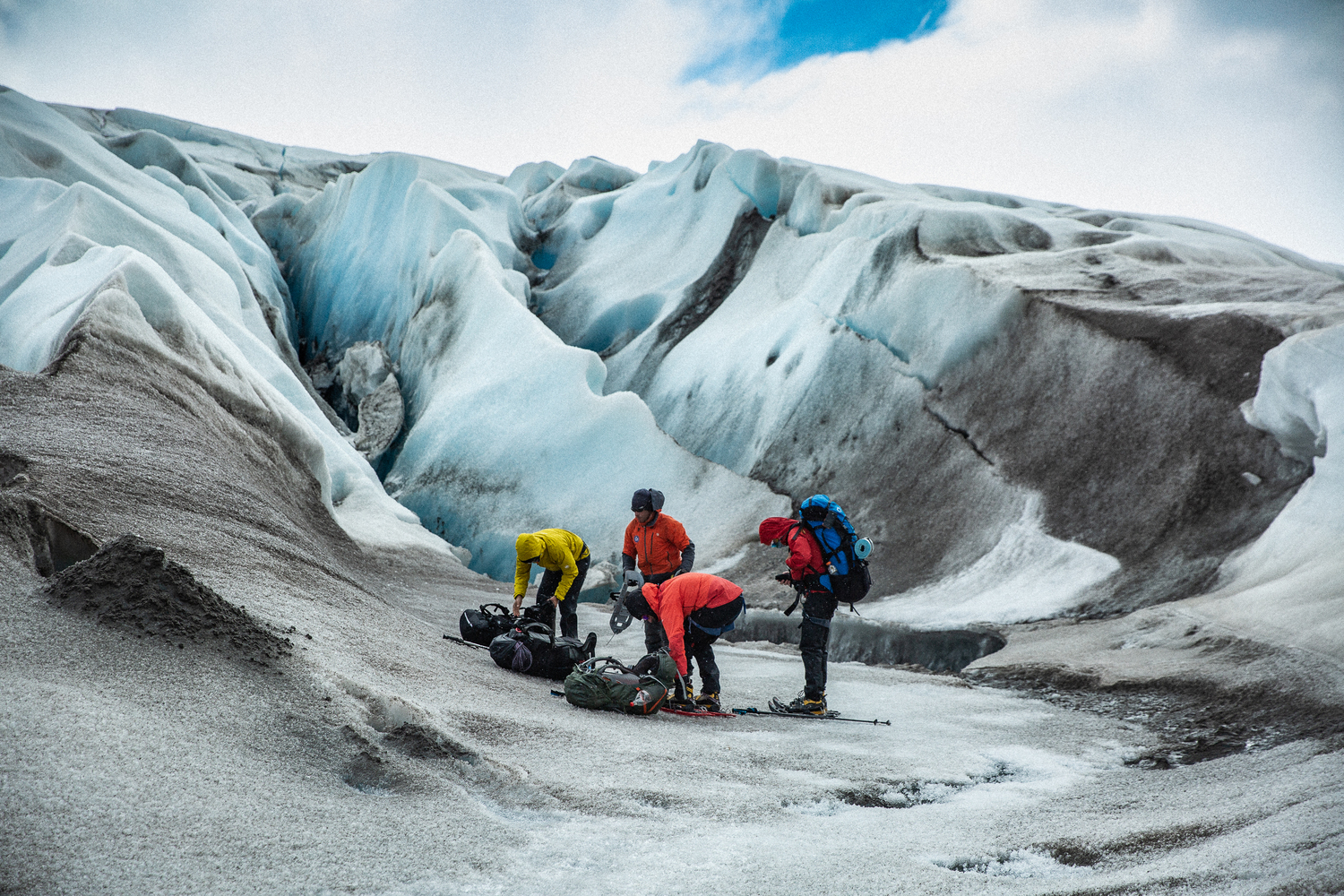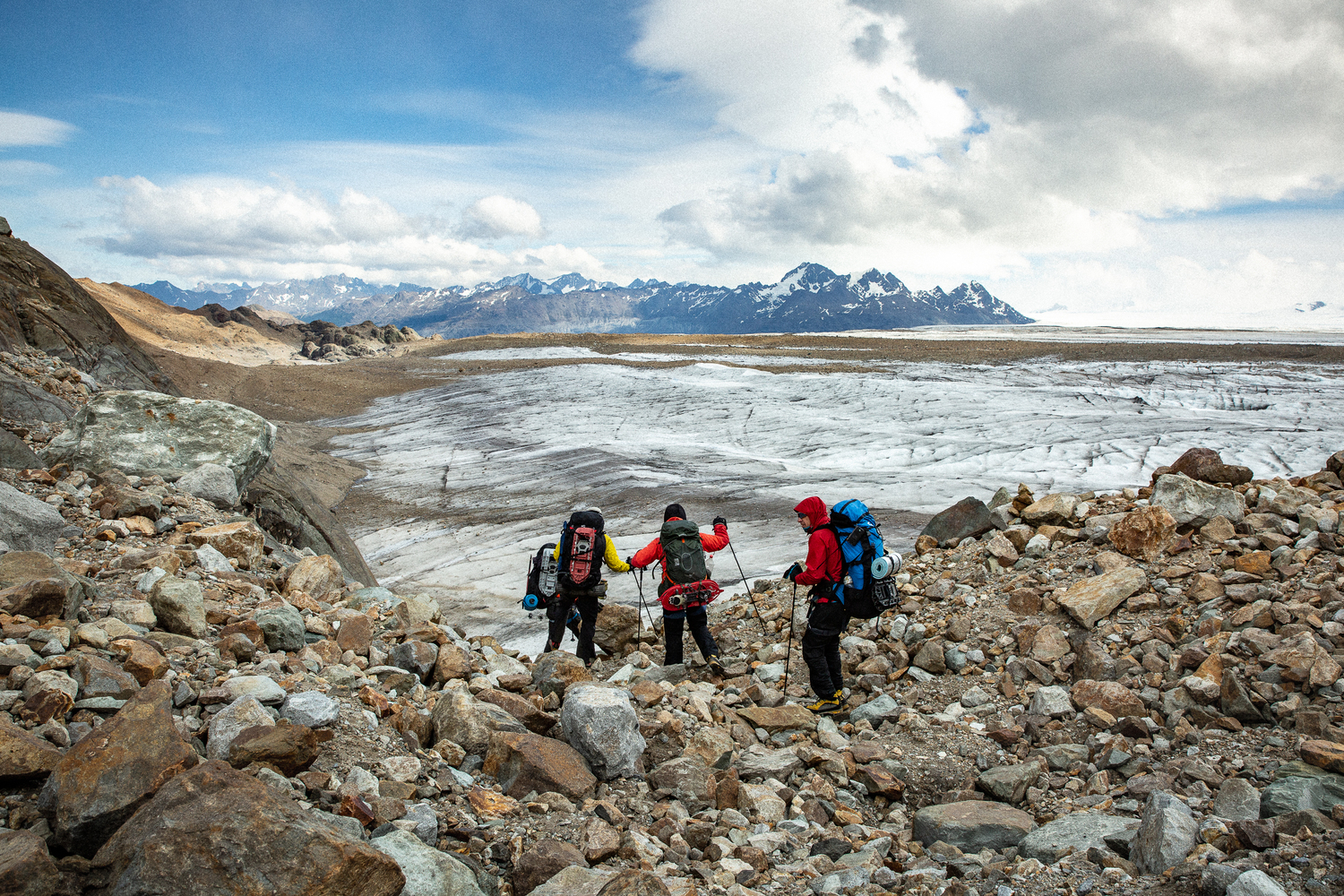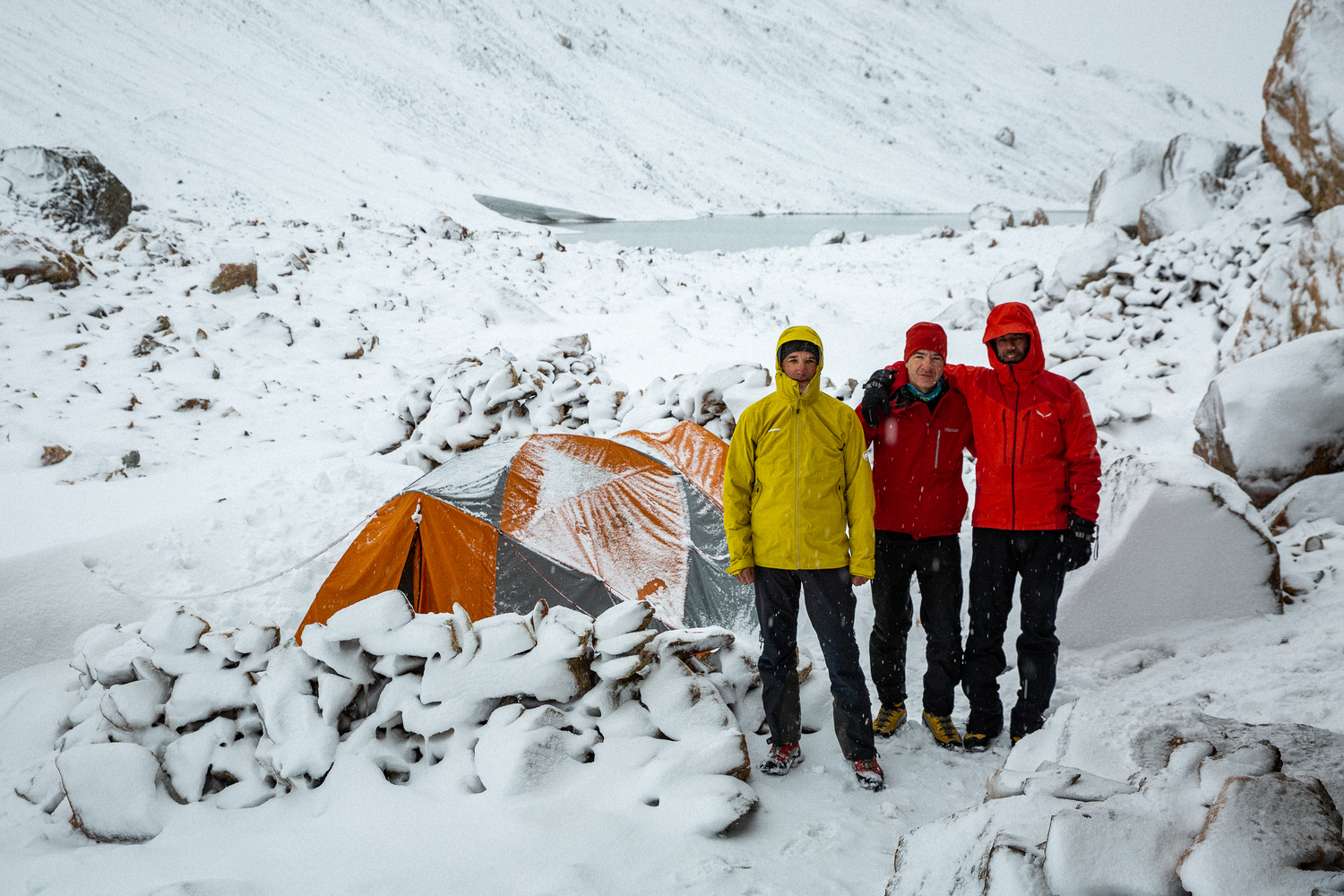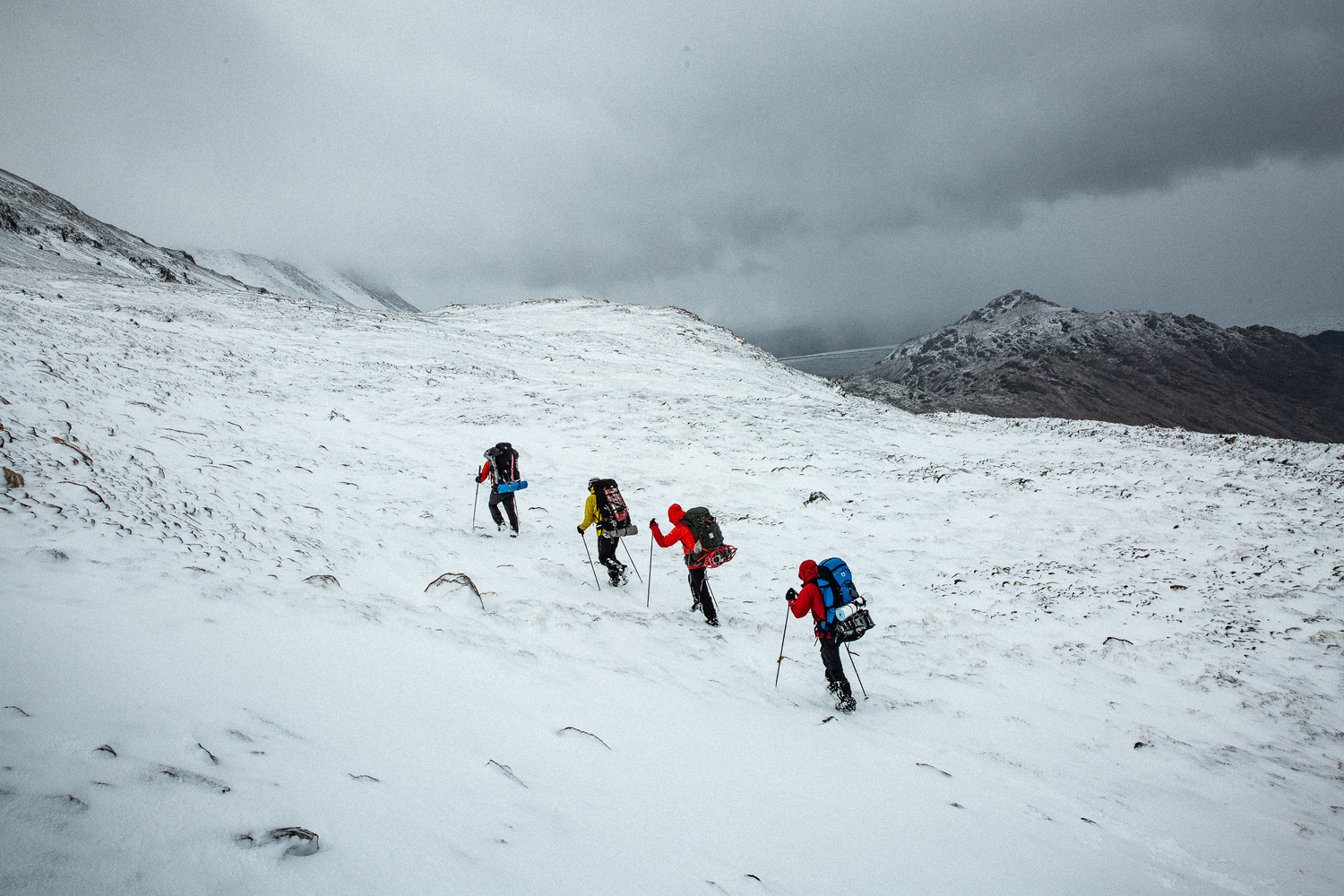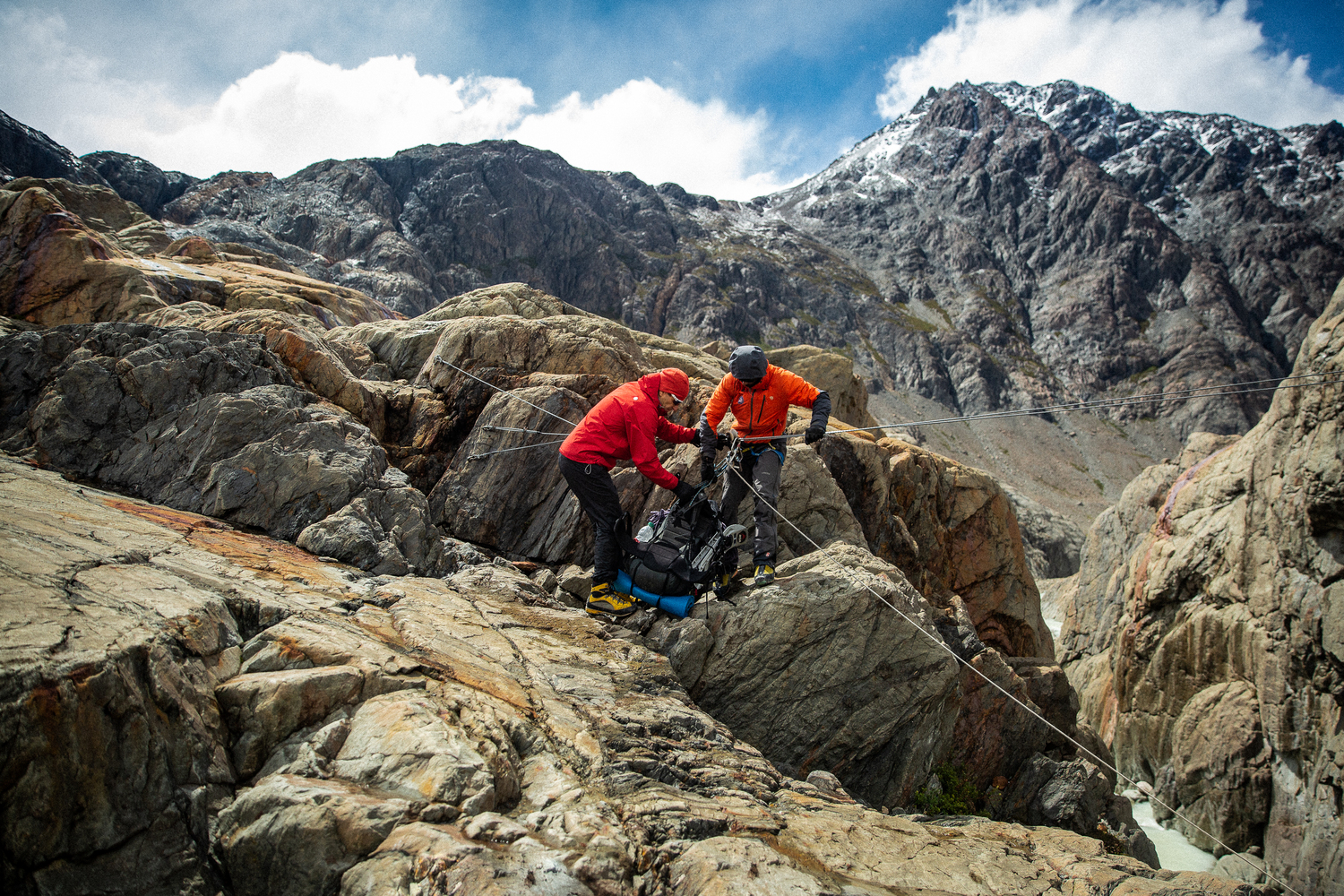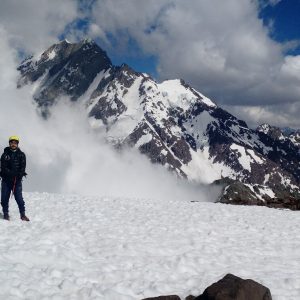Description
ITINERARY
The day before the expedition, we have a brief meeting with the guide to finalize details and check the necessary equipment.
DAY 1: ELECTRIC RIVER VALLEY
On the way, we will ford the Pollone River, from where we can observe the NW face of Mt. Fitz Roy. Transfer to the Electric River Bridge, 15 km northwest of El Chaltén and the starting point of
our first day of trekking to the base of the Marconi Glacier.
The first two hours of the hike are along a well-marked trail upstream from the Electrico River, through a forest of Ñire and Lenga trees. At Piedra del Fraile Camp, we leave the vegetation behind and walk through a glacial valley from where we'll have a better view of the Marconi Pass. From this point, there will be no more vegetation to protect us, so we will be exposed to the wind, and the trail becomes more unstable and slower to navigate. We skirt the southern edge of Electrico Lake, pass the old La Playita camp, and continue to a zip line over the Marconi River that gives us access to the valley of Laguna de los 14, where our first camp will be. Distance to travel: 12 km (6 hours of walking).
Elevation: 400 m.
Laguna de los 14 Camp
DAY 2: GLACIER OF THE 14 - MARCONI PASS
At first light, we begin the daily routine of our expedition: breakfast, break camp, pack our backpacks, and begin the day's hike.
At first, we cross rocky terrain and smooth, stepped-like rock planes that give us access to the ice. Depending on the ice conditions, crampons and ropes will be used to overcome crevasses or steep slopes of hard ice.
This is one of the most technical and challenging days of the expedition, not only due to the elevation gain but also due to the variability of the terrain between rock, ice, and snow.
The Marconi Glacier creates a funnel effect for the winds coming from the Patagonian Ice and the Pacific Ocean, generating gusts laden with snow and ice, which can add not only a physical but also a mental challenge for each member of the expedition.
At the end of the day, we will arrive at the Chilean García Soto refuge at an altitude of 1,600 meters. It will allow us to see the sunset and sunrise over the walls of Fitz Roy, Cerro Pier Giorgio, and Gorra Blanca.
Distance to cover: 12 km (7/9 hectares of walking).
Elevation: 800 meters plus... ascending.
Paso Marconi Camp
DAY 3: MARCONI PASS – CIRCO DE LOS ALTARES
In the morning, we begin crossing Marconi Pass.
Just an hour into our hike, the Southern Patagonian Ice Field will open up before us, giving us views of the still-active Lautaro Volcano, the Mariano Moreno Range (almost as high and much larger than Fitz Roy), the Paso de los Cuatro Glaciares, and the Chico Glacier to the southwest.
While the terrain becomes a little easier, the exposure to the constant northwesterly winds can make it a challenging day as well. As we continue over the glacier, we will be roped.
Our course will be south to Circo de los Altares, at the foot of the legendary West Face of Cerro Torre. Snowshoes may be required if necessary.
Travel distance: 12 km (6/7 hours of walking).
Elevation: 50 100 meters uphill – 100 meters downhill.
Los Altares Circus Camp
DAY 4: CIRCO DE LOS ALTARES – LAGUNA ESQUIES
In the morning, we will head to Laguna de los Esquíes on the lateral moraine of the Viedma Glacier and the selected departure point to leave the HPS (formerly known as the Viedma Glacier at this location). We will travel for 3 hours on the glacier and then cross moraine terrain that gradually becomes more stable.
Distance to be covered: 14 km (8 hours of walking)
Elevation: 250 m descent and 250 m ascent at the end of the day.
DAY 5: LAGUNA ESQUIES - CAMPAMENTO TORO
On this day, we'll begin our journey through the Tunnel River Valley, which will take us to El Chaltén. The first challenge is the ascent to Paso del Viento, followed by the descent to Camp Toro, where we'll rest in a lenga forest.
Ascent: 300 meters
Descent: 700 meters
DAY 6: CAMPAMENTO TORO – EL CHALTÉN
This is the final challenge; we'll travel through the Túnel River Valley to Chaltén.
Distance: 15 km
Ascent: 300 m
Descent: 500 m
DAY 7: EXTRA DAY
This day will be used as an extra day in case of bad weather or as a rest day if necessary.
RETURN TO THE ICE QUOTE
Included / Activity scheduled for 6 days and 5 nights + two extra days in case of bad weather.
-
- V25/Trango3 4-season tents similar and 2-person 4-season tents.
- Personal safety equipment, harness, crampons, carabiners, snowshoes.
- Group safety equipment, ropes, ice screws, sleds, etc.
-
- Full breakfasts.
- Box lunches for hiking, afternoon snacks, and dinners. The meals are of excellent quality (breakfasts are based on a mix of cereals, coffee, tea, mate, powdered milk, sugar, and stevia).
- Box lunches consist of fresh fruit sandwiches and a boost of energy bars, chocolates, and mixed nuts on the first day. Later, they include crackers with cold cuts such as raw ham, quality jerky, cheese, and a boost of mixed nuts, energy bars, and chocolates. A snack consists of sweet Frutigran biscuits, cold cuts, salami, or ham with crackers. Dinners consist of a starter of soup and a freeze-dried main course, all from various CampFood or LYO Food brands.
- Dessert.
-
- Assistant, Mountain Guide (GM) Reference cost US$ 1,600.- In the expedition up to 4 people we include an assistant who helps the group in general, he is also a Mountain Guide.
- High Mountain Guide authorized by the Los Glaciares National Park, UIAGM High Mountain Certification. Reference cost US$ 2,800.-
- Communication, inReach Satellite and VHF x emergencies.
- Personal accident insurance for each participant.
- Internal Transport Bridge. Electric River.
- We do not include personal porters, they are paid separately and their current value in 2025 is US$1,500.
- All meals during the expedition: for a single passenger the value is US$ 4,290.- / From the second passenger per person Pays US$ 3,190.-
PERSONAL EQUIPMENT
- Mountain Boots (*)
- Backpack 70-75 L
- Sleeping bag (-15°C, duvet recommended)
- Bivouac bag
- Pocketknife or penknife
- Mattress (Therma-rest recommended)
- Headlamp + spare batteries
- Telescopic poles
- Sunscreen and lip balm
- 1 liter Nalgene bottle and small thermos
- Personal hygiene kit.
- Personal first aid kit
- Wide adhesive tape or duct tape
OUTFIT
-
- Light replacement footwear (sneakers)
- Thin fleece pants or synthetic leggings
- Trekking pants (soft shell)
- 3 pairs of socks (2 thick synthetic and one thin)
- Medium fleece or sweater
- Thin synthetic T-shirt
- Thick synthetic t-shirt
- Windstopper or thick fleece jacket
- Down or synthetic jacket (with hood)
- Over-trousers (Gore-tex)
- Hooded anorak (Gore-tex)
- Leggings
- 3 pairs of gloves (polar or windstopper, waterproof and spare)
- Warm hat (wool or fleece) and sun hat
- Neck warmer (buff or balaclava type)
- UV filter lenses and goggles
(*) Hiking Boots: We can rent boots for the expedition. If you require them, please let us know.

